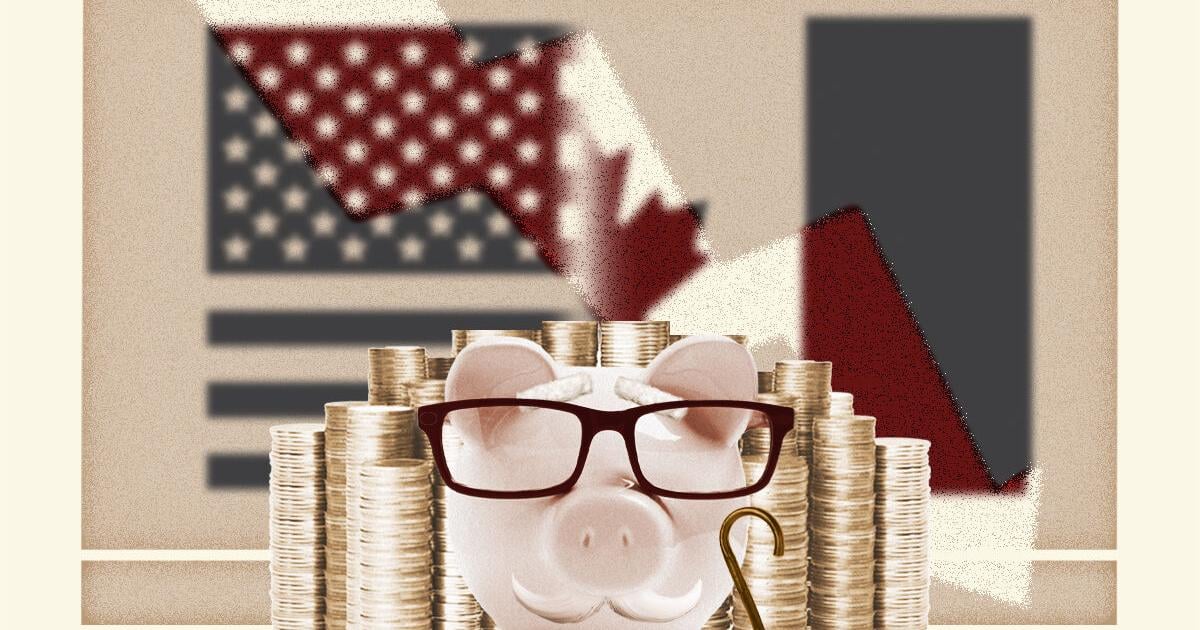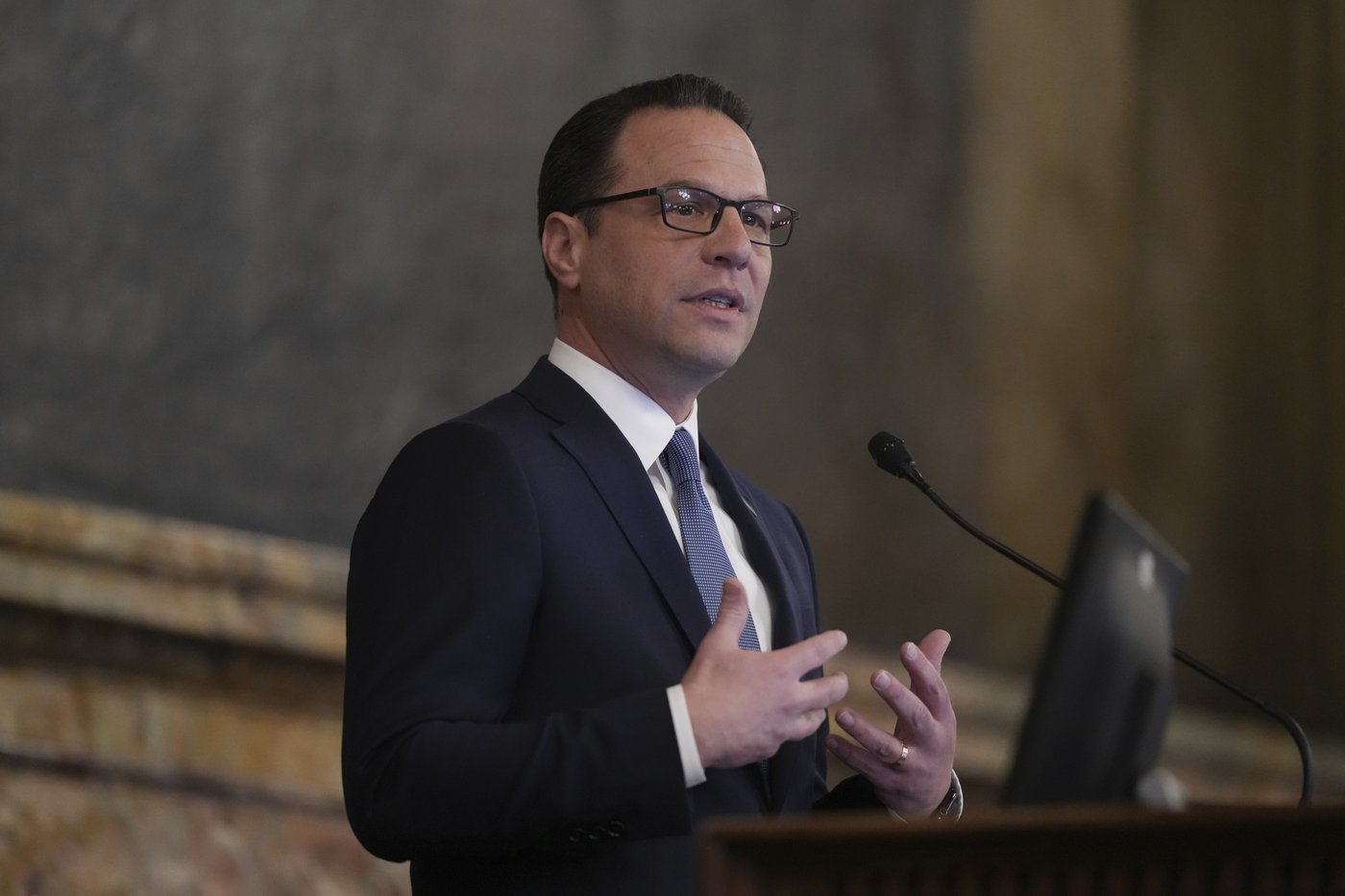As markets plunge — then rally, then plunge — amid U.S. President Donald Trump’s global trade war, Canadians nearing retirement are growing increasingly worried that their hard-earned savings could be at risk.
Concern around tariffs, inflation and the “51st state” — a term Trump has used to suggest the U.S. should annex Canada — have been top of mind for those approaching retirement, says Clay Gillespie, managing director, financial adviser and portfolio manager at RGF Integrated Wealth.
Political and economic uncertainty combined with headlines about stock market volatility is shaking investor confidence, with many fearing their retirement plans — and pensions — could be thwarted.
Canadians are asking, “Will this affect their ability to retire? And will it affect their ability to generate the income they think they can generate in retirement?” Gillespie says.
“People are quite scared given the current environment.”
Here, financial experts provide advice for Canadians approaching retirement:
Perspective is key
Since the Trump administration announced the tariffs on April 2, we’ve seen significant downward pressure on the stock market, Gillespie says.
However, he notes that while the S&P 500 and the S&P/TSX (Canadian index) are down year-to-date (Jan. 1 to now), the S&P/TSX is still up over the past 12 months (as well as the S&P 500) as of April 11. “A typical diversified portfolio will also be up at the end of the day over one year,” he adds.
Anita Bruinsma, financial coach at Clarity Personal Finance, adds that U.S. markets, as shown by the S&P 500, rose by nearly 50 per cent over the past two years — 24.2 per cent in 2023 and 23.3 per cent in 2024.
“That was an unexpected boon for investors (and retirees) considering that the average return is about 10 per cent per year,” she says. “Most retirement and financial plans use a much lower rate than that — perhaps something like 5.5 per cent to six per cent per year.”
For Canadians with defined benefit pension plans, there’s no immediate cause for concern, Bruinsma says. Their income isn’t affected by market volatility.
Those relying on defined contribution plans or personal savings, however, may be feeling more anxious by market turbulence.
Still, Bruinsma emphasizes that a good retirement is possible without a defined benefit plan.
“The stock market can allow your savings to grow faster than an indexed pension payment, and that’s what’s been happening over the past couple years,” she says.
Every retiree will face a challenging environment at some point, she adds. whether that’s now, at 70, 75 or 80. There’s always periods of correction, inflation and instability.
Create some insulation
Gillespie recommends clients who are five years or fewer away from retirement do the math to figure how much money they need over the next three years to maintain their lifestyle — especially those just one to two years away from retirement.
“Take that money out of the market,” he says. His advice is that clients should adjust their portfolio and move that three-year portion into GICs or high-yield savings accounts.
“If the stock market goes down, you can just dig into those investments that you sold when the stock market was still up,” he says.
The big risk in retirement, he adds, is having to dip into your portfolio after a market drop. If the market eventually rebounds, but you’ve already withdrawn too much, you may not have enough there to recover.
Delay the CPP and Old Age Security
Kimberley Jensen, financial planner and president of Victorious Financial Services at Sun Life, says Canadians might consider delaying the Canadian Pension Plan (CPP) and Old Age Security (OAS) to 70, if seniors can financially manage in the meantime, or if it makes more sense to draw down other assets first.
Seniors receive their first OAS payment the month after they turn 65, but they can delay payment for up to five years. The longer they wait, the higher their monthly payments will be. For example, if someone at 65 delayed their OAS pension for the maximum deferral period of 60 months, their monthly amount will increase by 36 per cent at age 70.
CPP works similarly. If you begin receiving payments after age 64, the amount increases by 0.7 per cent each month — or 8.4 per cent per year — up to a maximum increase of 42 per cent if you start at age 70 or later.
That 8.4 per cent per year is guaranteed, says Jensen.
“No investment is going to offer a guaranteed rate of return of … 8.4 per cent per year.”
Spend wisely
With so much uncertainty, the one thing people can control is their spending, says Janet Gray, an advice-only financial planner with Money Coaches Canada.
While those with defined benefit pensions have more certainty around retirement income, that doesn’t protect them from rising costs — which could increase significantly.
A substantial cost-of-living increase could be painful for those already living on the edge, Gray says, pointing to rising prices for necessities like groceries.
She cautions against making major financial commitments right now — whether it’s giving money to children (unless necessary) or making big purchases like a new car or home.
“Inflation may impact your cash flow to a degree that you can’t maintain the debt obligations you’ve taken on,” Gray said. She advises a “wait and see” approach to avoid overextending.
If possible, consider trade-offs. For example, if your car breaks down, weigh the cost of repairing it versus splurging on a new one, she adds.
Pay down debt
Jensen believes Canadians nearing retirement should focus on paying off debt — especially high-interest credit card balances.
Given the current economic climate, she recommends eliminating high-interest debt before retiring to avoid being burdened with variable payments during retirement.
When it comes to mortgages, retirees need to assess whether their retirement assets can comfortably cover ongoing mortgage payments. If cash flow is tight, it may be wise to delay retirement and pay that down first, Jensen says.
Consider delaying retirement
For those planning to retire in the next five years, Gray recommends sticking with that plan.
However, if you’re only one or two years away from retirement and don’t have a defined benefit pension, it may be worth considering your timeline, depending on what happens in the markets, and if your investments have taken a significant hit.
“Taking out money from an investment that has decreased … is a really bad start to withdrawing that money,” Gray said. “You want to withdraw money from a high-investment savings rather than a low-investment savings at the beginning of your withdrawal.”
She gives an example: if you have $100,000 in your RRSP and the market drops, leaving it only worth $80,000 in your first year of retirement, but you still need to make withdrawals to cover living expenses, you’re drawing more heavily from your capital. In contrast, if you delayed retirement and allowed the portfolio to remain at $100,000 — or even grow to $120,000 — you’d be drawing from growth instead, giving the investment more time to recover.
Gillespie doesn’t believe clients need to make any hasty decisions based on a short-term market drop. But, if market conditions remain poor for an extended period — say six months or longer — and their portfolio is down 20 per cent for the year, retirees may be forced to delay.
He points to the 2008 financial crisis, when some people had to wait until 2010 to retire — or retire with less income.
Bruinsma doesn’t believe anyone’s retirement should be devastated right now — unless they’re retirement plan wasn’t done properly.
“They’re clearly over-invested in equities and didn’t have a buffer/cash wedge,” she says.



